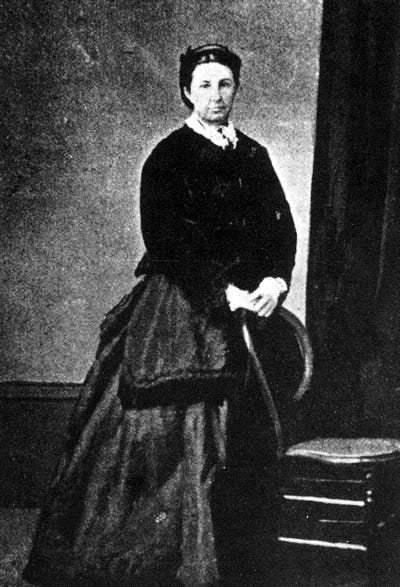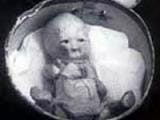Issue 9: Minnie Dean
Williamina McCulloch was born in Scotland. She lived with her parents and seven sisters. Not much is known about her early life growing up. What is know is that in 1857, her mother died of cancer, then sometime in the early 1860’s she moved to Invercargill, New Zealand with her two young daughters.
She claimed to her neighbours that she was a widow to a Tasmanian doctor. No evidence of the marriage exists and at the time Minnie was still using her birth name. It wasn’t until 1872 that she became Minnie Dean when she married an innkeeper called Charles Dean. They began their married life in Etal Creek, a well-known spot on the route for people heading to the goldfields. After the gold rush they turned to farming; however, this was not a prosperous decision, as they soon found themselves in financial trouble.
This is when the couple moved to Winton. Located about 30 minutes drive from Invercargill. Charles took up the occupation of being a pig farmer. Minnie managed to find some work by taking in unwanted children in exchange for payment, this is also known as baby farming.
Baby farming was seen as a reasonable alternative in the time where there wasn’t contraception. This also happens when having children in wedlock was frowned upon. There were also a few people who wanted to send their children away for adoption. All these services could be filled by women like Minnie. It is commonly believed that she was once responsible for nine children at the same time. She would received either monthly or lump sum payments.
Inquests
It was in 1889 that a six-month-old baby died while in the care of Minnie died, two years later a six-week-old baby met the same fate. These two deaths would lead to an inquest against her. The inquest found that while the children were well cared for, the premises, The Larches cottage - was inadequate. The ruling by the judge was that Minnie should reduce the number of children in her care to being one at a time. She was then sent on her way.
Police Surveillance
It should be noted however that by the time the inquest happened, the police had been made aware of Minnie’s activities. Upon investigation they had found that she unsuccessfully attempted to take out life insurance policies on some of the infants.
The police wanted to see if they could catch her, the opportunity came in May 1895. According to a railway guard, Minnie boarded a train with a baby and a hatbox. He noted that the latter of which was very light. Upon departing the train; however, she only had the hatbox, which had become suspiciously heavy.
The baby in question was traced back to a woman named Jane Hornsby. She had sold her one-month-old granddaughter to Minnie early that day. Police took Hornsby to the cottage where she identified a piece of clothing that belonged to her granddaughter, despite no child being inside. A search of the garden was conducted. It was here that the truth was finally dug up, as two buried bodies of baby girls. The skeleton of a four-year-old boy was also uncovered. One of the babies was Eva Hirrnsby, the missing one-month-old. The other infant girl was Dorothy Edith Carter, who had been given to Minnie in a similar situation to Eva.
Trial
Minnie was charged and put on trial for infanticide. The trial was held in the Supreme Court a month later. She was defended by Alfred Hanlon, a renowned lawyer.
During the trial, the lawyer tried to argue that the Carter baby had died accidentally. This raised eyebrows as the toxicology report showed that she had an opiate called laudanum, was in high quantities in the baby. At the time it was commonly used to calm babies.
Though Minnie never took the stand in her defense - she did however write a 49-page account of her activities. Within this statement she mentioned that in addition to Margaret Cameron and Esther Wallis (a 10-year-old whom the Deans adopted in 1890) she had looked after 26 children — including Eva Hornsby and Dorothy Carter — between 1889 and 1895.
Of those 26, six are known to have died. One was reclaimed by his or her family. Five healthy children were found living at her cottage at the time of her arrest. That leaves 14 children unaccounted for.
Police believed they had been murdered. The possibility that some may have died due to illness or accident did not seem that plausible. It is not known whether any of these lines of enquires were followed up.
As New Zealand is known today as a pretty quiet, pretty place, a case like this drew a lot of interest. As there is murderbelia today, during the trial souvenirs were sold. The souvenirs were dolls in hatboxes. She had become the most hated woman in New Zealand, and people wanted some way to commemorate the occasion.
The trial lasted 4 days, the jury found her guilty of murder. She was sentenced to death by hanging. On August 12, 1895, Minnie Dean was taken to the Invercargill Gaol to be executed.
“She walked straight on without a halt to the drop-door, gave a scrutinising glance, first at the gallows and its belongings, then at the half dozen people standing below, a contemptuous, loathing look at the hangman, and placed herself in a position to facilitate his work as much as possible, and took a few long breaths while he was adjusting the rope and placing the white calico cap over her head and face.” - The Otago Daily Times






